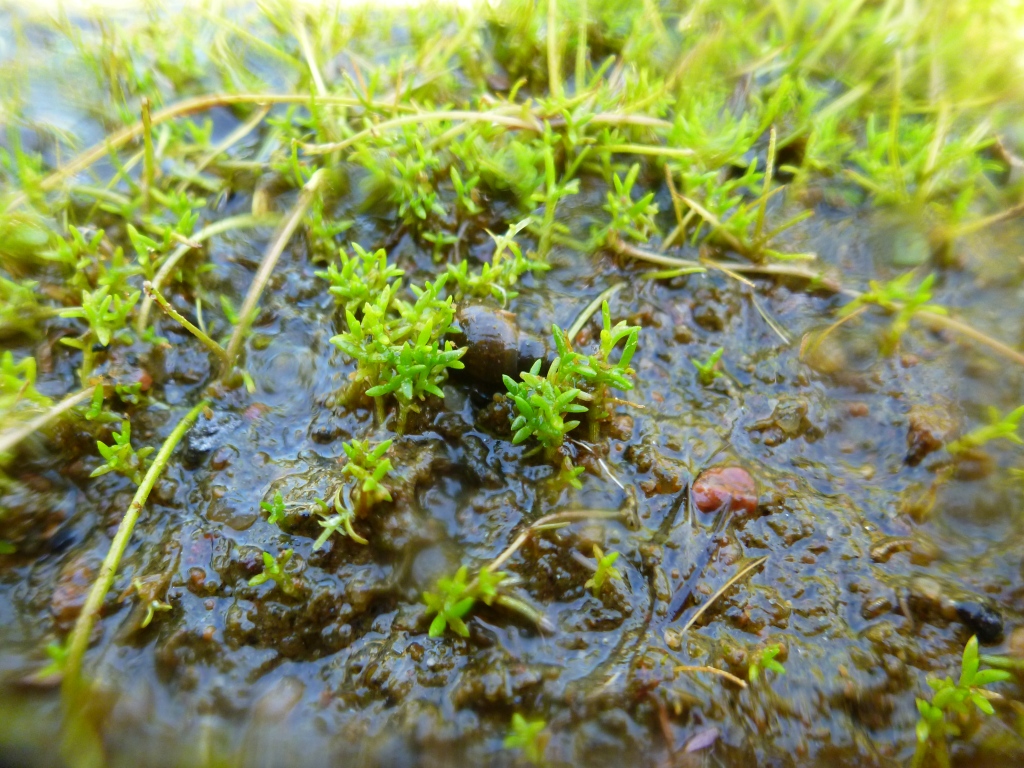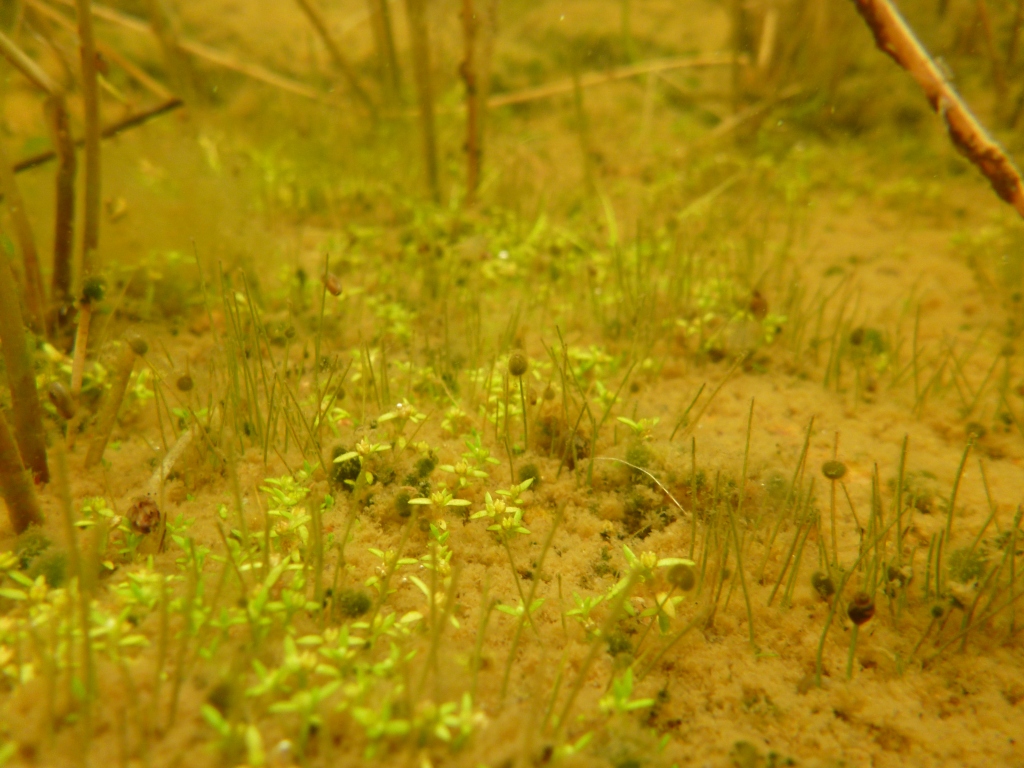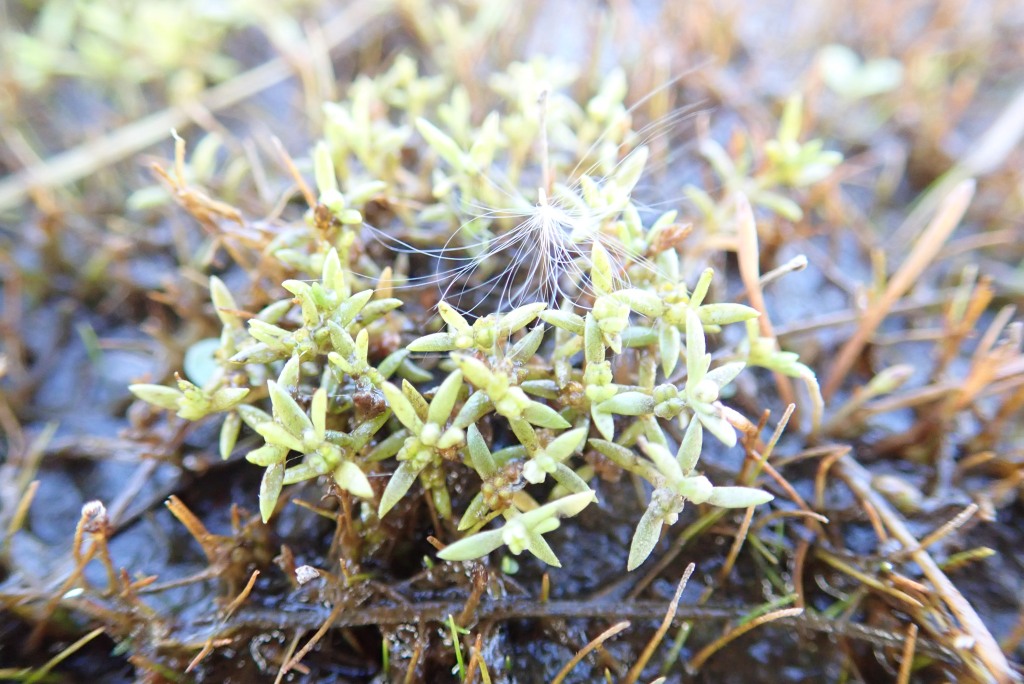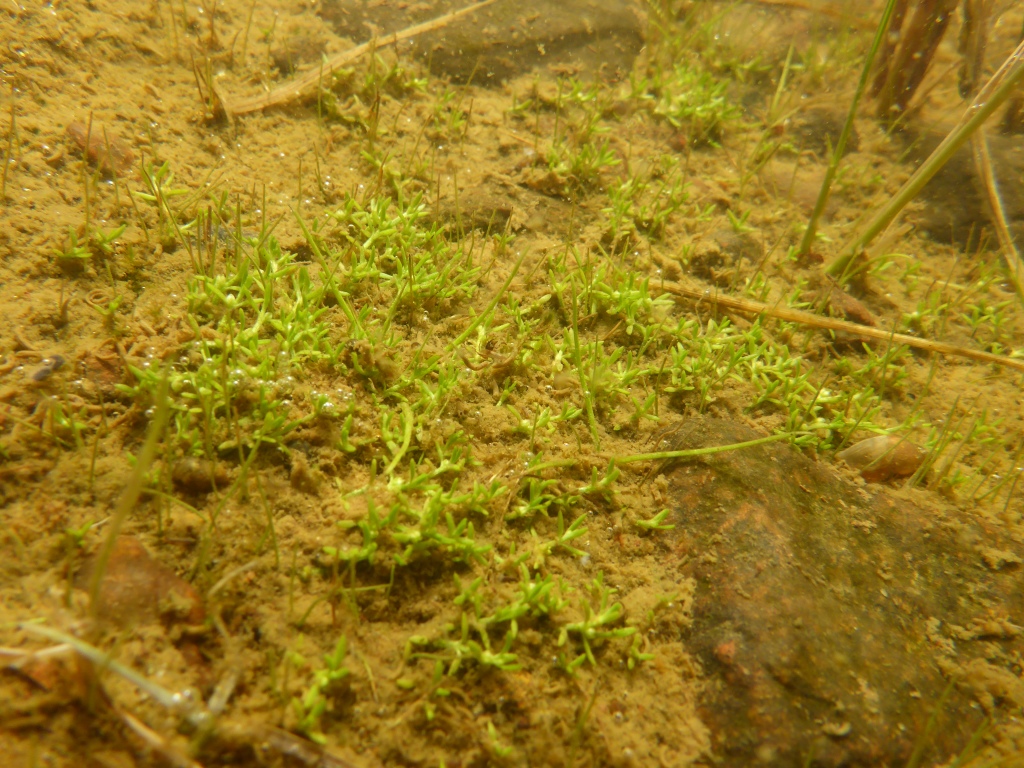Pygmy waterweed is true to its name: it’s tiny. It is a teeny weeny annual succulent semiaquatic or aquatic plant that only grows to about 1-5 cm tall.
You can find this small and inconspicuous vascular plant from the water’s edge at ponds, lakes, rivers and also brackish water seas like the Bothnian Bay. Its distribution is very wide from North America to Europe to who knows where else since this species is so small and doesn’t really look like anything that would jump out from the ground that it’s probably very often overlooked. In Europe, International Union for Conservation of Nature IUCN, has labelled it as DD – data deficient (2011). HELCOM gave it a status of NT (nearly threatened) in 2013. In Finland, it got the same status in 2000 but then in a more recent estimations in 2010 and 2019 it was found VU (vulnerable) in Finland.

Pygmy waterweed used to be more common, or so it is thought, when there was more grazing on the coastal meadows and the strong competitors to pygmy waterweed, for example reed Phragmites australis, were kept in check by cows and sheep. Another factor driving pygmy waterweed towards extinction is eutrophication, which also gives an advantage to reeds. Coastal construction and dredging contribute to habitat loss and thus to less pygmy waterweeds.

Pygmy waterweed is quite common in the Finnish side of the SEAmBOTH area. It can most often be found in river estuaries and river banks in very shallow (down to 0,5 m) water, or on dry or moist land, depending on the water level. Pygmy waterweed grows on silty or muddy shallow banks and shores that are sometimes under water, sometimes above. If the plant is found underwater, it’s most often beautifully light green, but if it’s been on dry land for a longer time, it may be reddish or purplish. The seeds are dispersed by water and that’s how this annual plant can show up in different areas depending on year and wind direction.

Pygmy waterweed often forms large meadowlike areas of thickly growing individuals so if you stumble upon one of them, you’re most likely to find plenty more around the corner.

Pygmy waterweed is one of those modest little species that doesn’t make a fuss of itself but wither away without notice due to eutrophication and other human activities. One way to help this pretty little plant is to try to find out its true distribution. Even though it’s small, it doesn’t mean that it wouldn’t be important for the aquatic biodiversity.
If you want to know more about the species of the SEAmBOTH area, see species guides on the Results page!
Written by Essi Keskinen

